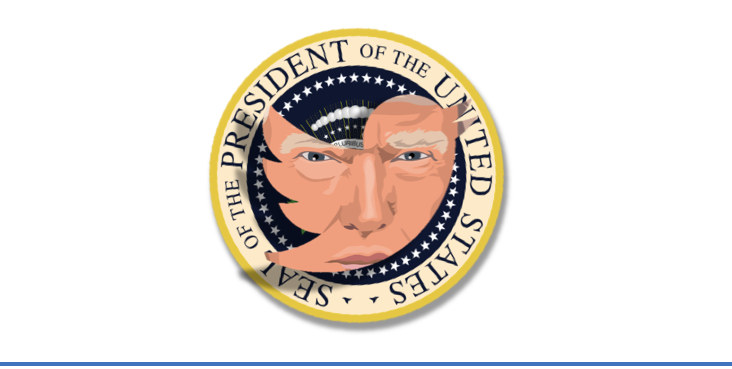Assessing the Effects of Filters, Followers, and Fake News on Free Speech
Let’s face it: social media is political.
Based on a study by Pew Research Center, if you log onto your favorite social media site – Twitter, Facebook, Instagram, LinkedIn, etc. – and scroll through your newsfeed for two to five minutes, there is a 93% chance you will see at least one political post.
And this raises one big question: Is it good or bad that social media is so political?
Well, the answer is complicated. Political social media brings all-new ways to connect and use your American right of free speech, but it also threatens freedom of speech with the negatives it brings, such as fake political news and mistruths disseminated by those in power.
The good news is that there are ways to take full advantage of the positives of politicized social media while also minimizing the negatives that come along with it. And all of this is addressed below, beginning with a brief history on how the heck social media and politics became so tangled together in the first place.
So… How Did This Happen?
The political use of social media was not exactly the intended purpose of each site upon its inception. Although many of the creators of social media sites recognized that political discourse was going to be disseminated on their sites, none of the top ten social media sites Americans use most today included any mention of politics in their official brand purpose statement. Instead, the biggest social media sites’ mission statements center on socializing in general – connecting, interacting, and sharing with those around you, and the world at large.
So . . . when did social media sites shift from social networking sites to hubs of political discourse and debate?
Social media exploded onto the world’s stage in the 2000s, but one of the most notable political shifts in its trajectory came about in 2008 with Barack Obama’s presidential campaign. Obama did not invent anything new with his campaign techniques – instead, he and his campaign team simply used the resources available to them in new ways. Obama and his team used social media sites to create one unstoppable, well-networked force that could raise money, organize local events, spread the Obama message, fight smear campaigns, and get out the vote – something his campaign has since been appropriately lauded for.
Today, however, running such a networked campaign is essentially expected for candidates of any level of public office. It is almost unheard of for a candidate to successfully win an election without a social media presence. In fact, it is almost impossible today to imagine the idea of separating politics and social media. Why? Well, I think the answer is twofold.
Both Politics and Social Media Shape Americans’ Daily Lives.
The political world and the world of social media both have the power to shape our identities, how we view others, and ultimately how we interact with those around us. And by necessity, the two have become seamlessly intertwined. Because the political world tends to be dominated by the voices of those in power, those with political opinions going unheard turn to social media to express them. And when those opinions catch on, those individuals can more easily launch a political campaign to become one of the powerful voices in the political world.
But even already powerful politicians feel a similar pull to social media: it is clear that a politician today who chooses not to use social media is missing out on one of the easiest ways to access her electorate. Additionally, the electorate today is aware of the same truth, and also does not want to miss out on interacting with their politicians, which illustrated by a recent study that found that each of the “most popular” politicians have tens of millions of followers, across four different social media platforms.
Politics Isn’t Going Anywhere. And Neither is Social Media.
As the popularity of politicians rises, and recent statistics show more than 87% of Americans are registered to vote and seven-in-ten Americans have at least one social media account, it is clear that a majority of Americans are active in both worlds. And now that these two worlds have collided and politicians and voters alike have gotten a taste for the rich kinds of political communication that social media facilitates, neither want to go back. Whether we’ll admit it or not, the numbers say Americans like the mix of politics and social media.
Never before have politicians felt so personable and relatable to their constituents, and so instantly available for discussion and engagement without filters or slants. This realness helps ensure that those representatives are held accountable to their voters. Because a politician’s political missteps can be instantly called out by constituents on social media, they are incentivized to be more cognizant of voters’ views and interests. Moreover, social media incentivizes users to act on their political views by providing tools to organize movements, spread awareness about a cause, collect relief funds, and so much more. These new powers of speech were never imagined by our Founders, but they certainly serve the Founders’ goal for each American’s voice to be heard in our democracy.
However, this increasing politicization of social media is not without its challenges. Social media certainly seems like it brings nothing but positives to the realm of free speech. Higher civic engagement? Greater politician accountability? New ways to communicate? Faster ways to communicate? What could be bad about any of that?
The Scaries of Political Social Media
As the 45th President would say, the problem with political social media is that there’s just “So much FAKE NEWS!” Whether it’s hackers from other countries, deep-fakes, mindless bots, or internet trolls with too much time on their hands, social media today is filled with misinformation. But it’s not just Donald Trump who feels this way. Researchers have found that a majority of Americans today feel that false news stories and misinformation spread over the internet cause “significant harm to the nation and needs to be stopped.”
Unfortunately, fake news is all-too common on social media today. Taking the form of altered videos, forged news stories, or little lies hidden among other facts, fake news has crept into our social media feeds in such insidious ways that many do not even recognize it. And the worst part? Fake news is protected by the First Amendment. Though the Supreme Court has said false statements are “particularly valueless,” the Court ultimately ruled that mistruths are protected by the First Amendment, since freedom of speech is aimed at protecting public debate.
However, I am not sure the Supreme Court of years ago would still uphold protections of false speech after seeing how prevalent and harmful it is today. Misinformation on social media spreads globally like wildfire, which is especially problematic when the misinformation is on a matter of political import, such as national security or public health. When mistruths of this scale are disseminated, Americans can actually end up in harm’s way. And these falsehoods only serve to increase general feelings of mistrust in America.
Yet, unfortunately, the only ones who can regulate fake news on social media currently are the sites themselves. Social media sites have internal systems for flagging and removing content that is inappropriate, misleading, or otherwise violates a site policy. However, as many of us with social media accounts know – these invisible site regulators are not very active. Content is hardly removed, and when it is removed, it is often weeks or months after it was reported. These sites are ill-equipped to regulate their entire sites, though they probably shouldn’t anyway – because regulating speech is the job of the American government, not privately-owned media companies. It is Congress who needs to address the threats social media poses for free speech with a wide-sweeping Act covering all aspects and facets of internet usage and discourse.
But… what do we do now?
How to Best Protect Your Right of Free Speech Today
For now, while we are battling fake news from the trenches, awaiting reinforcements, the best we can do is to actively discipline ourselves. According to Pew Research Center’s fake news study, respondents reported various techniques they use most often to discipline their use of social media – and all of these techniques involve having an active mind while on social media.
Awareness is the key. First of all, do NOT get all your news solely from social media sites. Because of the instantaneous nature of social media, new posts come incredibly fast, which means that the first post you see on a topic on social media might not be the best or most complete story yet. Double-check breaking news, especially when it is news of a highly consequential nature.
In addition, social media must be viewed with a critical lens. There is no need to be overly skeptical of everything ever posted on social media, but it is crucial to remind yourself to resist the urge to instantly believe everything you hear or see on social media. Social media was made for instantaneous socializing – not for lengthy debates. Although social media platforms are good arenas for discourse, few are designed for well-thought-out, scholarly debates. So, remember to be critical, and save debates for in-person situations. Besides, in-person debates are actually exactly how the Founders imagined the right of free speech being used – which suggests that perhaps, in-person debates might still be the best way to thoroughly discuss something.






